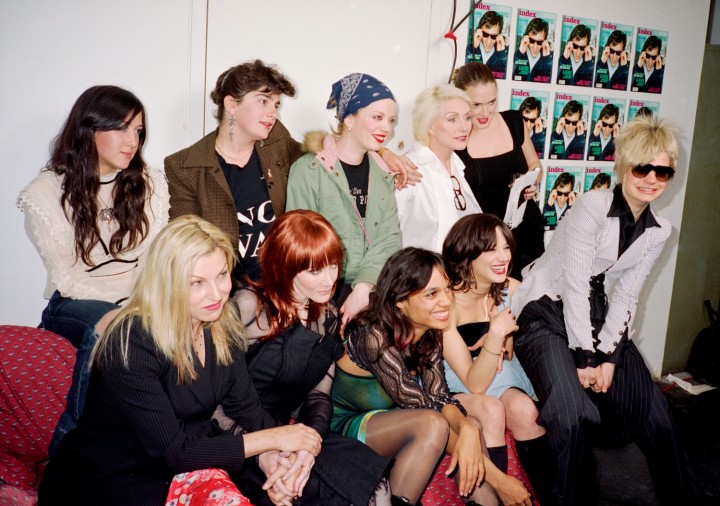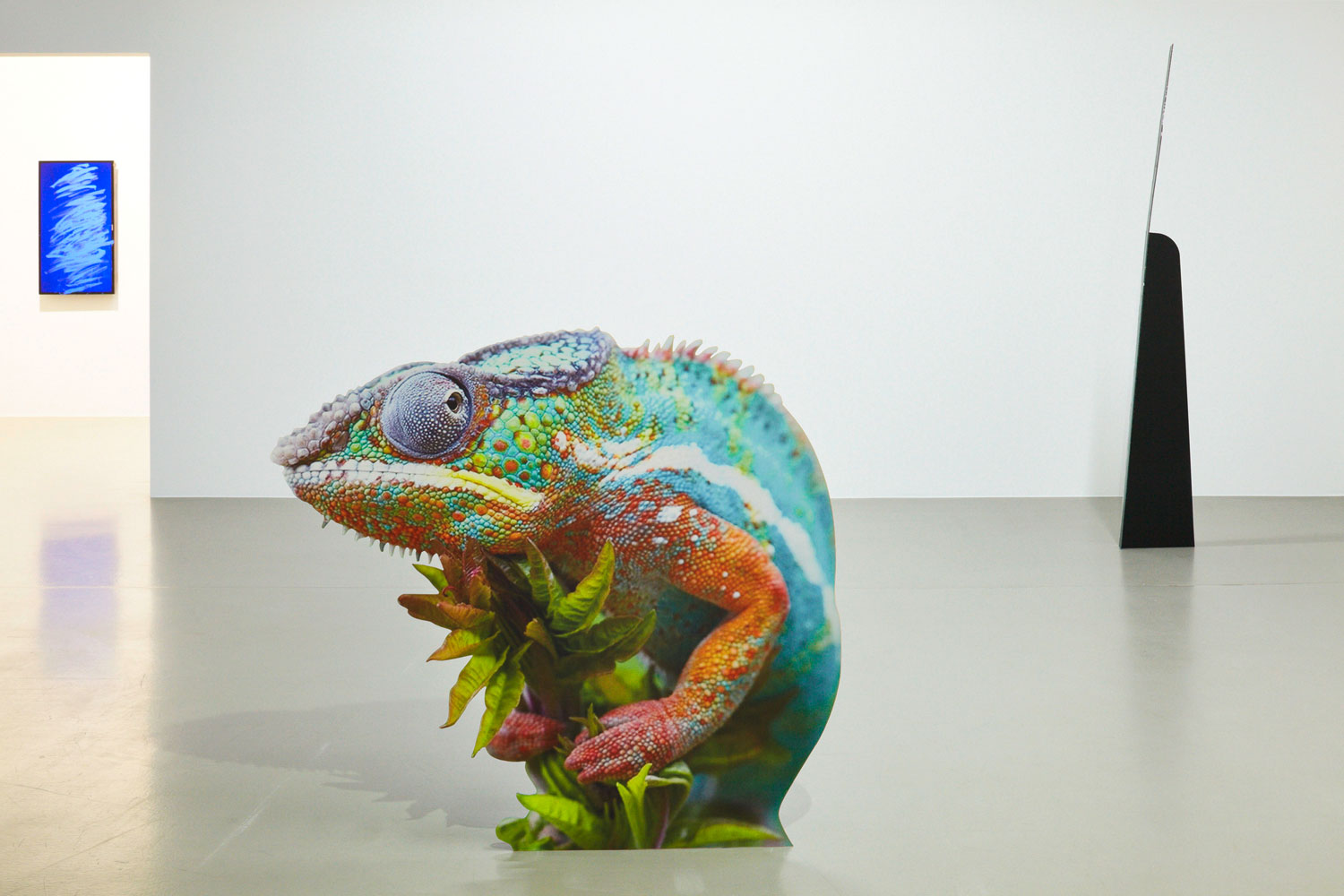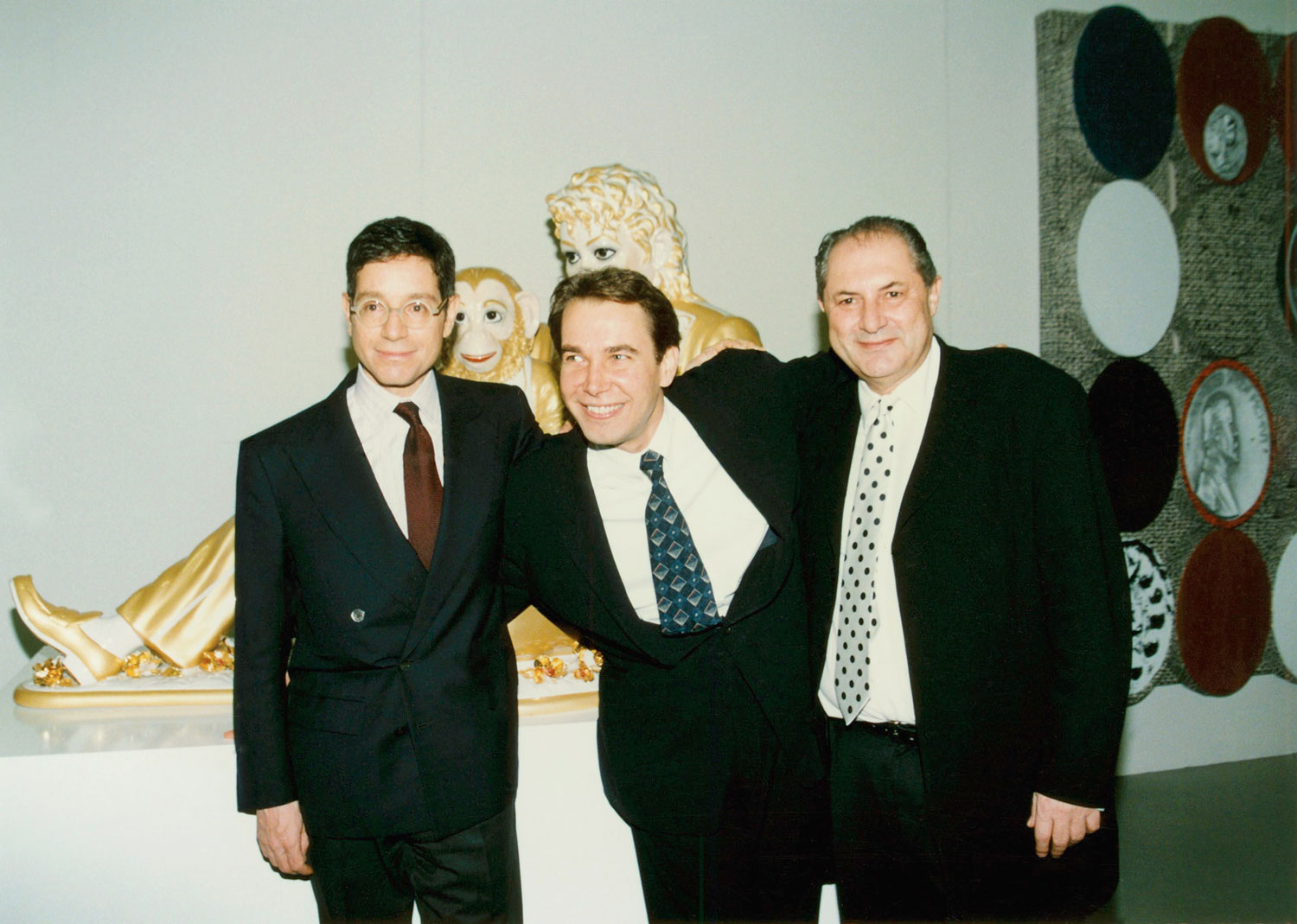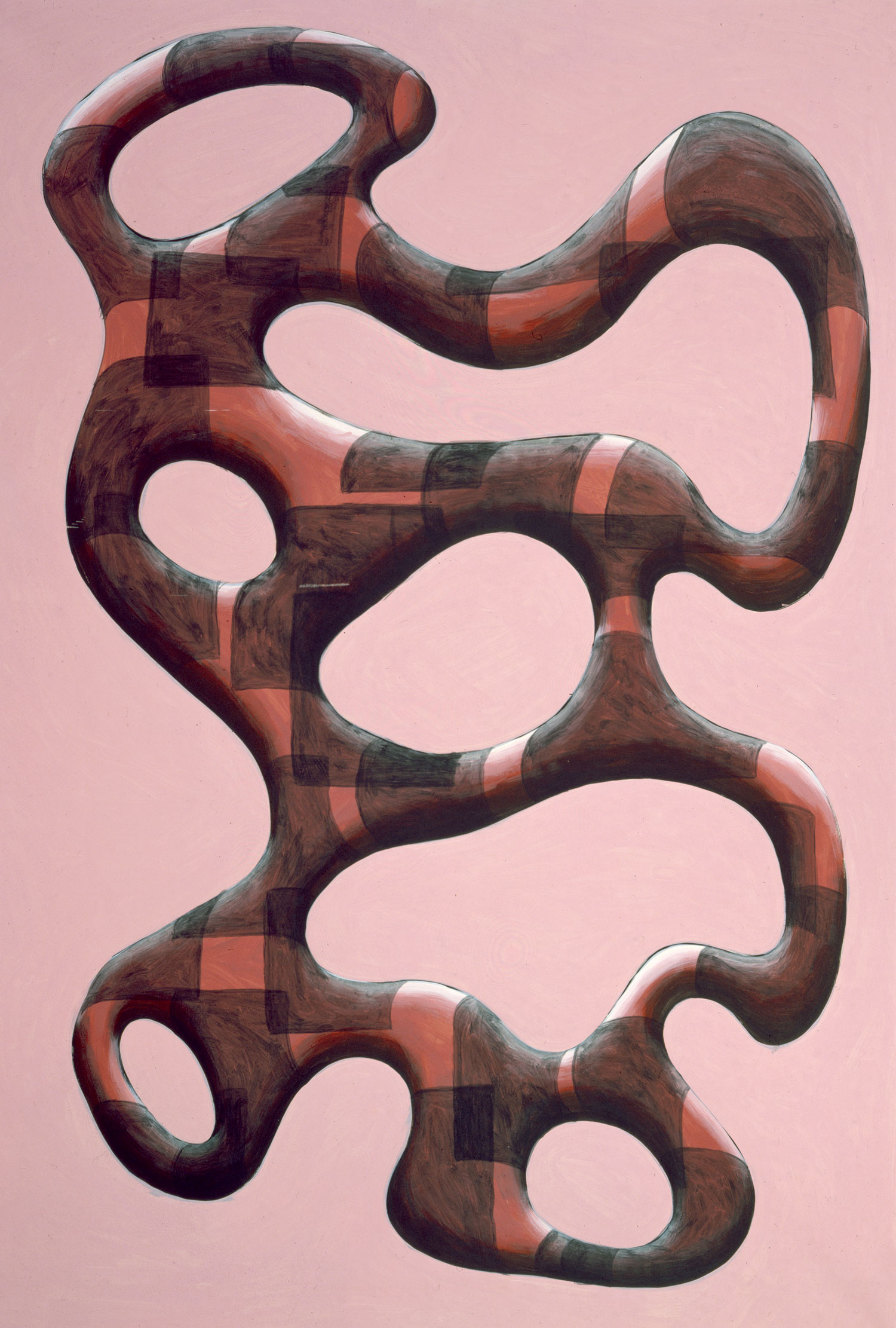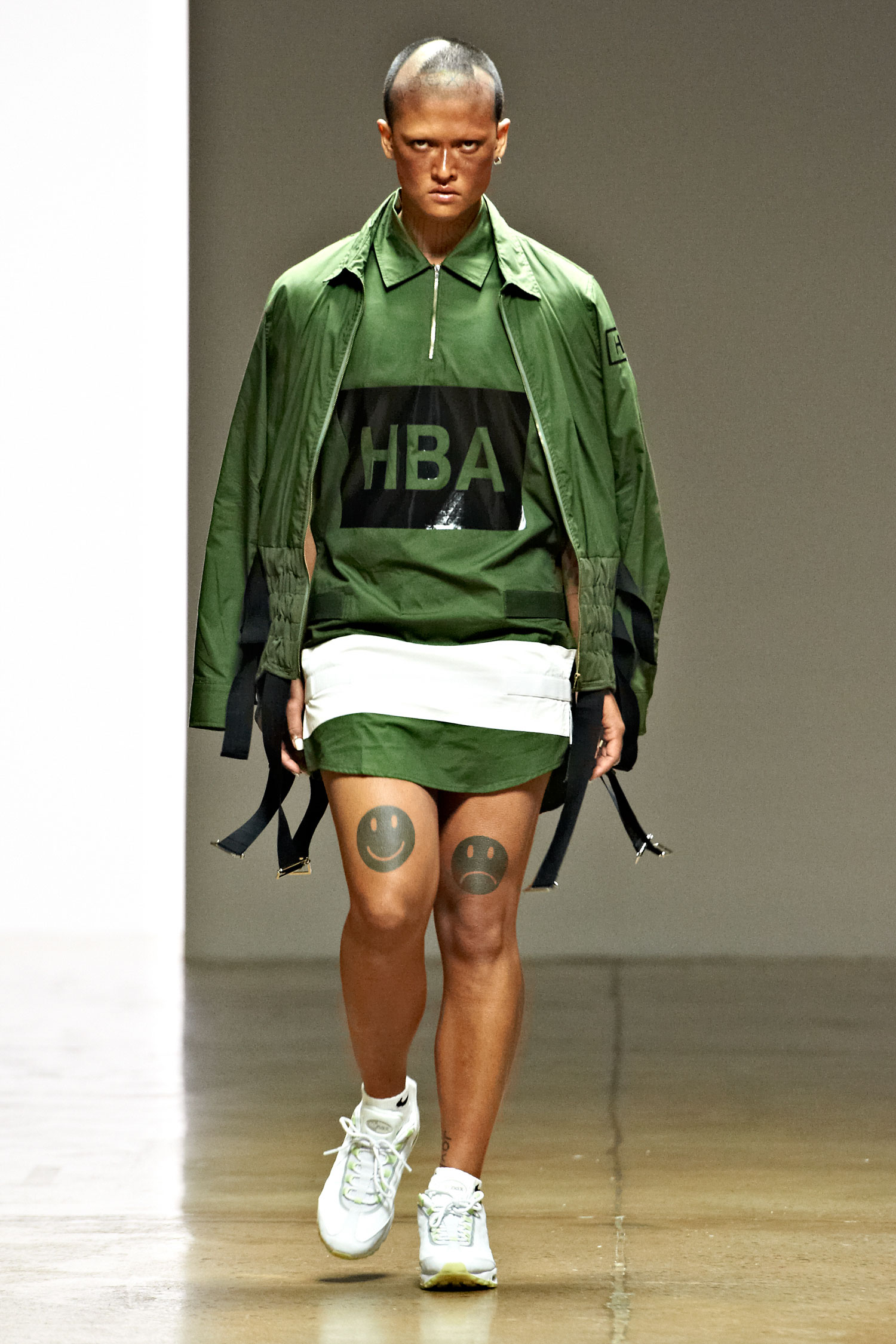
Rafael De Cárdenas: Are you familiar with the hashtag phenomenon?
Peter Halley: Are you talking about Twitter?
RDC: Can you think of a hashtag that you would like to start?
PH: I’m pretty nerdy. I’m more of a Wikipedia addict. I have to admit I spend a lot of time surfing Wikipedia from subject to subject. I relish certain aspects of pop culture, but I usually find out about things through what friends tell me.
RDC: I’m a huge fan of your work, but I knew INDEX magazine before I knew your work.
PH: Oh, how great.
RDC: In 1996 I was in a relationship with a guy who was also a huge fan of yours, so there was a sort of mythology around you as a cultural figure in my life from when I was twenty years old. He was a painter, a really shitty painter. He ended up not pursuing art. He was smart, though. In the late ’90s INDEX magazine was to me a collection of all the things I was interested in — that I had watched pressed up against the glass as a kid growing up uptown.
PH: That’s right — you’re from New York too. You know, we have a book coming out. So this is very timely. It’s called INDEX A to Z, and it’s the best of INDEX magazine. We put together lots of our best photographs and interviews. It’s coming out in April.


RDC: Was INDEX a reaction to something, to some deficiency you found in media?
PH: It was an attempt to cover people in a more straightforward way, in a Q and A format. I always thought that when a journalist wrote a profile about someone in a magazine, it was more about the writer’s agenda than it was about the subject. When I started INDEX with Bob Nickas in 1996, it seemed like recording interviews was a much better way to allow people that we were interested in to say what they wanted to say. Of course that was also the idea behind Warhol’s Interview magazine, which I followed assiduously as a kid in the ’70s.
RDC: Were there other publications that came before that influenced you?
PH: The other big influence for me was W magazine — which I loved. In the early ’80s they hired a whole team of twenty-five-year-olds, people like Edward Leida and Dennis Freedman — and they were all so brilliant. It was so elegant and at the same time so quirky. In one issue, all of a sudden they were covering Providence, Rhode Island — and the name of the article was something like “Glamorous Providence.” I figured someone at the magazine just went there for a weekend party and came back with an idea for a story — that’s the kind of attitude I really admire.
RDC: So do you think there is anything out there right now?
PH: It’s very complicated right now. Media is so different. The print edition of INDEX magazine ended in 2005. The proliferation of media on the internet has changed everything since then. You have to ask yourself whether it’s more interesting to do a printed magazine, an online publication or a combination of the two. At this point, I think it’s crucial for any publication to create the right individual mix that meshes with what they are trying to say.
RDC: I was talking to Dirk Standen, the editor of Style.com. He was talking about their print version. I was asking, “Why would you do a print version of Style.com?” — something that’s updated ten to twenty times a day. They are doing a twice-a-year Style.com print version. It’s a best-of-the-season compilation, and it’s doing quite well. He was advocating for the success of the magazine model. I thought that magazines were a dying breed.
PH: Not at all, I think that niche magazines and the upscale ones will remain very viable. And people still value publications that are beautifully produced.
RDC: Well, even the biggest magazines have surprisingly low readership. For instance, I am very surprised that Vogue’s circulation is one million, considering there are 300 million Americans. For a magazine that sets the aspirational bar for American women, that’s not so many copies.
PH: Well, that’s higher than other places in the world. In Japan, a successful magazine can have a circulation of 100,000 copies. Our circulation was not more than 25,000.

RDC: Most of these niche fashion magazines, like The Gentlewoman and Fantastic Man, print about the same. I guess they would have a hard time getting 25,000 copies out. A lot of them are give-aways in hotels…
PH: Our theory was: it’s not how many people you reach, it’s who you reach.
RDC: You reached a very aspirational crowd.
PH: It was more the opinion-making crowd.
RDC: Tastemakers. That’s the buzzword. Now they are called influencers. So the print version of INDEX ran from 1996 till 2005. What was the most memorable story or interview for you in 1996?
PH: In the early years, the most interesting aspect of the magazine was having Wolfgang Tillmans photograph the covers for us. He did our covers for the first two years. In so many ways, he set the tone for the magazine.
RDC: What was the most memorable story of the last year?
PH: For me, the most memorable interview was with the French designer Matali Crasset — I became a huge fan of her work and ended up collaborating with her on an installation.
RDC: Oh, you also did Slavoj Žižek.
PH: We did. Wolfgang Tillmans interviewed him and photographed him. Among the interviews I did, one of the best was with Brian Eno. It was amazing — he’s so smart.
RDC: Brian Eno’s Music for Airports was my soundtrack in graduate school. I’d listen to it every day. It was very calming and I think it set the mood for my projects.What is your favorite song if you want to feel somehow energized?
PH: The overture of Mozart’s opera The Magic Flute. I’m not very original.

RDC: Mine is “Black Box.” Do you know that? (Rafael sings a few bars.)
PH: Oh, you sing!
RDC: I am very concerned with fashionability. I think INDEX was a very fashionable publication for a certain group of people.
PH: I do think that fashionability can be seen as a profound thing. Something that is fashionable is a repository of ideas that are very important at the time.
RDC: INDEX was certainly “indexing” a certain time — it became sort of a style and cultural bible. Likewise I think your work is fashionable. It’s been consistently so even though it has been formally very similar or almost the same.
PH: People always say that. I don’t quite understand where they get that. But please continue.
RDC: The variation in your work is very minimal compared to the rest of art.
PH: More than Rothko? Or Cézanne?
RDC: Point taken. My question is more about the fact that I think your work is fashionable and has consistently been so. There is a group of people who like Peter Halley — including young people.
PH: Without a doubt, INDEX did become fashionable. It’s an interesting story because we were all very nerdy, and yet we could do something that turned out to be fashionable. I think it was because the choice of material was not from the top down. Even though I was the publisher, the interviews that we published in the magazine were a mix that came from many different points of view. We had an editor-in-chief, two other editors, and a circle of contributors who would suggest ideas. So, if you are sitting in Lower Manhattan and you have these people around coming up with ideas, it’s just not that hard — in my opinion — to be interesting.
RDC: Was that what kept INDEX fashionable?
PH: We also really tried hard not to cover things that were already in the news cycle. We wanted to focus on interesting people, not their latest product. As the publisher, my responsibility was to keep the mix interesting and avoid things that seemed overdone. One of the important themes behind INDEX was that we covered indie culture. So there was a lot of indie music and film. We also covered NoLIta a lot. The clothing designers who had stores there were the beginning of indie fashion in the United States.
RDC: When I discovered INDEX, I wanted to be part of those uncoded codes. What do gay kids identify with now? Gay marriage? Is that what they aspire to? To be like their parents? Is that what’s exciting?
PH: Well, that is definitely an issue. Another part of INDEX magazine was that we actively identified with a queer sensibility. Queer isn’t a term that’s used much anymore. The mid-90s were a time when gay people were not in a ghetto anymore, and the cultures of straight and gay were really mixing. When INDEX first appeared, an acquaintance of mine said to me, “Is this a straight magazine or a gay magazine?” This person felt it had to be one or the other. The word queer didn’t refer to a particular sexual preference. It described a desire to turn things around, to see them from a queer point of view.
RDC: How does your own work achieve fashionability?
PH: Well, I have no idea if it really does. Interestingly, my work has been consistently popular in countries that have a Catholic cultural heritage. If you work with a lot of color, Protestants might just not go for it. For example my work is very popular in Belgium and Italy.
RDC: Now that you mention it, that’s where my work is popular too!
PH: Seriously though, I’m grateful that in Europe there is still an audience that is receptive to the notion that art, including painting, can wrestle with esoteric ideas.
RDC: You can say that about architecture and design in Europe as well.
PH: Also, unlike the U.S., many people in Europe see the rise of Neo-Plasticism, De Stijl and the Bauhaus in the ’20s — and the theories of abstraction that arose at that time — as a Golden Age, almost like the Renaissance. They believe that these ideas set the stage for most of the interesting things that came about afterwards. Since I am an artist with roots in the history of geometric abstraction, that belief sometimes leads to an interest in the work that I do as well.

